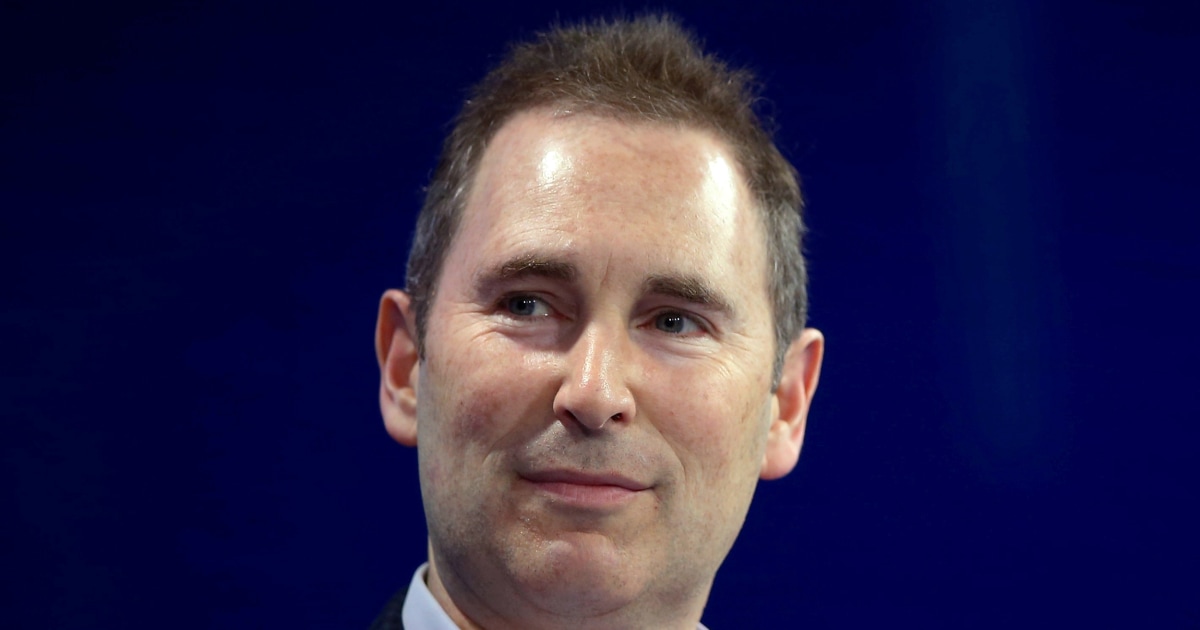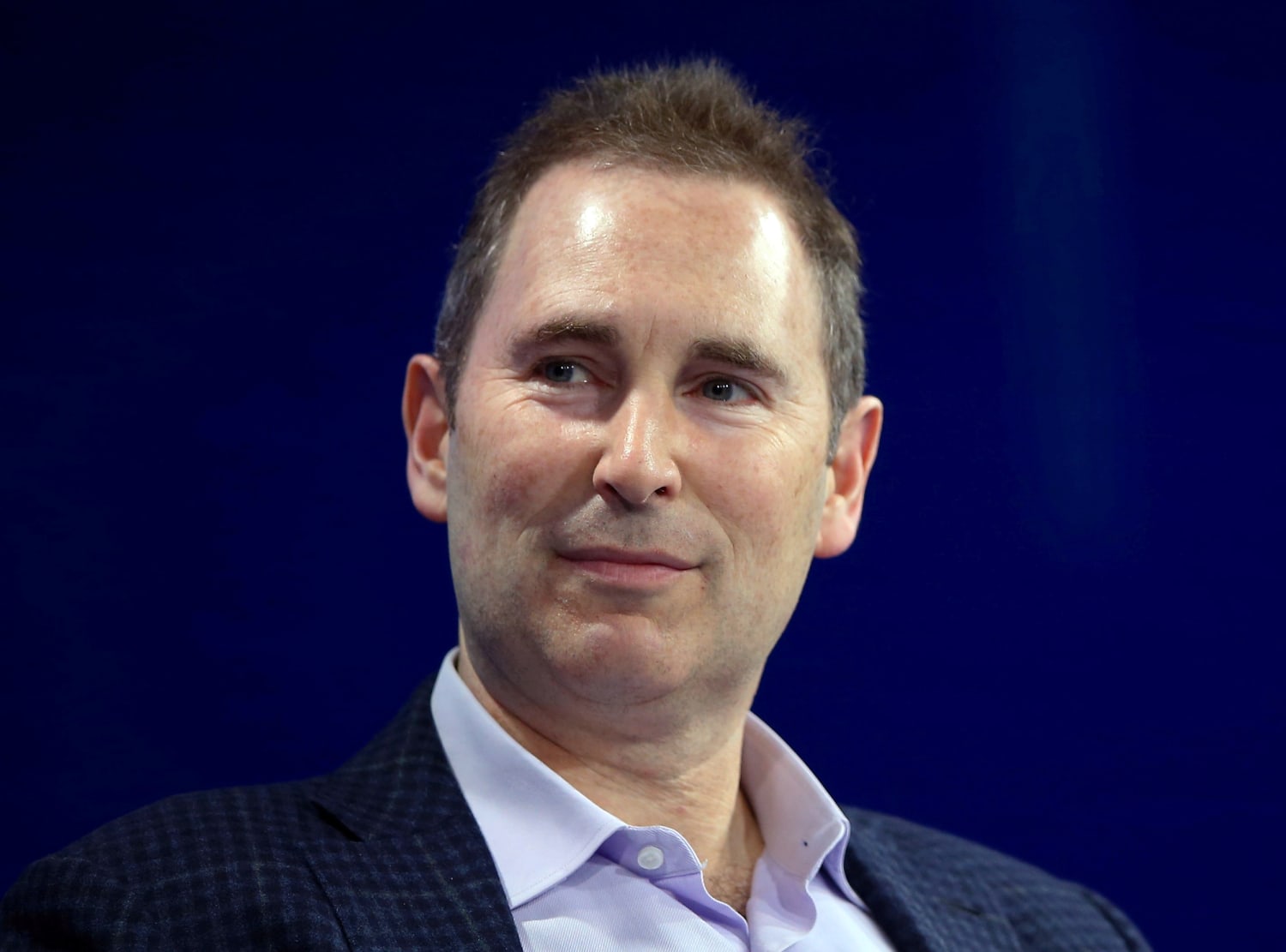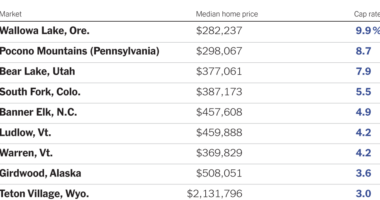
The news that Jeff Bezos was stepping down as Amazon chief executive and passing the baton to longtime colleague Andy Jassy gave plenty for the company’s 1.3 million workers to chat about this week.
But more than a dozen workers interviewed at different levels of the company had different takes on the changing of the Amazon guard. Current and former top and mid level workers and engineers largely welcomed the news that Jassy would be taking the helm of what Bezos has turned into a $1.7 trillion company. But workers at the company’s distribution centers predicted their lives would not change much except that they are no longer working for a celebrity like Bezos.
“I’m not sure that his overwhelming dose of personality that he brings to the day-to-day operation is going to be there anymore,” said Julia Fuller, a 58-year-old worker at a fulfillment center just outside of Detroit, referring to Bezos. “I’m not sure that the people at the senior level have the same skill set of driving principles.”
On Blind, an anonymous message board aimed at tech workers, just over half of nearly 1,600 Amazon employees who were polled called Jassy’s promotion a “good decision,” while 42 percent said they were “waiting and watching” to see how it unfolds.
Robin Gaster, a business consultant, said that Jassy, as a Bezos protégé, was as well poised as anyone to keep the company moving forward.
“He is deeply steeped in the Amazon culture,” said Gaster, whose book, “Behemoth, Amazon Rising,” is set to be published in March. “I don’t think he’ll bring any change. The question is whether the culture can survive without the energy that Bezos brings to it?”
Jassy Fans
Within the highest and middle ranks of Amazon, several current and former workers describe Jassy as a “good cop.” Colleagues in the Amazon Web Services division, where Jassy has been CEO, praised his track record and engineers seemed pleased to have a longtime colleague take Bezos’ place.
“He has a reputation for putting smart people around him on his team. He likes to challenge them, but listens to them, too. He doesn’t bulldoze or steamroll people, from what I’ve heard,” said one current AWS employee who spoke on the condition of anonymity because he was not permitted to speak to the press. “I think he’ll bring that same focus for detail and business expertise with him as he expands beyond just AWS.”
“There is no person better than @ajassy to replace as a CEO of Amazon,” tweeted Jinesh Varia, who worked at AWS for over a decade, leaving in 2016. “I take pride in working with him on various levels.” Varia praised Jassy’s “technical and business acumen as well as attention to detail.”
Another former employee who described himself as a “rank-and-file” AWS alumnus who worked there for nearly five years, pointed to how much AWS grew under Jassy: the division’s revenue jumped to $51 billion in 2020 from $5 billion in 2015.
“These are effective people and look at the results,” he said, speaking anonymously out of fear of reprisal from his current employer. “They don’t play around, and I felt like that went all the way to the top.”
Engineers, who often make more than $130,000 a year, plus lucrative options, also welcomed the news.
“I don’t really expect any changes,” said a Seattle-based engineer who asked to remain anonymous as he’s not permitted to speak to reporters. “In a company this size, I don’t think it matters too much for workers at my level. Jassy makes his money the same way Jeff does, so I imagine he’ll want to do the same things Jeff did.”
Another engineer who has been with the company for five years and was also not authorized to speak publicly by Amazon, shared similar views.
“We are all pretty optimistic,” he said. “Jassy has been with Bezos for years, and so we don’t really expect a lot to change.”
That’s not to say that workers in the mid-tier and highest ranks at Amazon don’t have their reservations. Some current employees have expressed concern that Jassy’s work at AWS to expand support for the oil and gas industries, like helping with data storage and digitizing oil operations, will continue now that he’s taking over Amazon, an issue that has led to large internal protests and walkouts among the company’s tech workers in recent years.
“It’s no secret that Jassy attends fossil fuel events and conferences and likely has direct connections to fossil fuel leaders around the world. It doesn’t seem likely to me that Jassy is going to be more eager to cut those ties than Bezos was,” one current AWS employee said, who is a member of the worker group Amazon Employees for Climate Justice. The employee added that employees are likely to continue to organize internally to push the company on the issue of climate change.
In Bezos’ letter to Amazon employees announcing he’s stepping down as CEO, he cited the company’s increased commitment to reducing its net carbon emissions to zero by 2040 as a key part of his legacy on social issues.
Rising status
The leadership change comes at a time when Amazon’s annual profits ($21.3 billion) and headcount (1.3 million employees) have reached record highs, as it has become a lifeline for many families avoiding in-person shopping through the pandemic. On a national stage, Amazon has even offered assistance to the White House in distributing and administering Covid-19 vaccines, with hopes that its fulfillment center workers will receive them ahead of other Americans.
But interviews with workers at Amazon distribution centers also show just how large and decentralized the company has become with its explosive growth. Darren Kostecki, a 35-year-old worker at an Amazon fulfillment center in Illinois, just outside of St. Louis, said that during his tenure at the company, he had never seen anyone close to the top echelons of the company visit where he works.
“I don’t even think we have seen regional managers in this building, and I’ve been here for four-and-a-half years,” Kostecki said. “I don’t think it will make much difference.”
Lisa Levandowski, an Amazon spokesperson, said in an email that this perception was inaccurate, and that prior to the pandemic, “regional leadership visited the site every quarter.”
Still, Amazon is facing increased public scrutiny for how little information it has disclosed about Covid-19 among its front-line workers. Employees have to check in online to determine the latest disclosures.
Amazon did not publicly release detailed Covid-19 infection rates until October, and has not updated those figures since, which means that groups of current and former employees on Facebook continue to try to discern that information.
In a news release on Tuesday, the company said it is currently testing more than 700 employees, who volunteer to be tested, every hour. But with a total workforce of 1.3 million employees, it would take 77 days to test the entire company once.
Some workers, like Kostecki, express concern about Covid-19 exposure at work. Kostecki estimated that there have been “well over 200” cases reported at his work site.
“Site-specific case figures lack a significant amount of context — like when each individual was last onsite, the overall infection rate in the community where the site is located, community data relative to where the associate lives, timelines since the start of the pandemic, and the overall rate compared to other companies, to name just a few,” Levandowski emailed in response to this claim.
Another employee who works at a fulfillment center in Hebron, Kentucky, outside Cincinnati and was not authorized to speak and feared reprisal, agreed with Kostecki’s concerns in a text message.
“I wish Jeff my best and I hope that we can get the coronavirus under control at our Amazon facilities,” wrote the worker. “The employee resource center is telling people to come back to work if they are no longer displaying symptoms (if they are asymptomatic) which is spreading it even worse. We’ve had over 400 cases in our building alone. We get text messages every other day telling us about more cases.”
For her part, Levandowski added that the company focuses “on communicating transparently to local health authorities and to our employees whenever there is a new case.”
Pay prospects
Overall, there appears to be hope that Jassy could improve pay for those at the bottom end. Wages currently begin at $15 per hour, more than twice the federal minimum wage. For 2019, the median annual total compensation for all U.S. full-time Amazon employees was $36,640, according to Levandowski.
“Maybe he [Bezos] needs to remember that without the little man busting his rump his company would be nothing,” texted Hellion Kate Herring, who worked at the CHA1 fulfillment center in Chattanooga, Tennessee, for over three years before quitting in October. “He created a great business for himself but I think he forgot what it took to get there.”
Similarly, Kostecki said that early on in the pandemic, many employees had pay bumps and other incentives that have now been eliminated.
“When Covid first started they gave us a $2 raise,” said Kostecki. “But that lasted 60 days, and they took that away.”
However, in Michigan, Fuller, the fulfillment center worker, relishes the fact that she said her pay has risen to $19 an hour from $12 an hour over the past five years, and said this was her “retirement job.”
“What job does anybody have where they are on such an upward trajectory of making more money in the exact same job?”
Source: | This article originally belongs to Nbcnews.com








